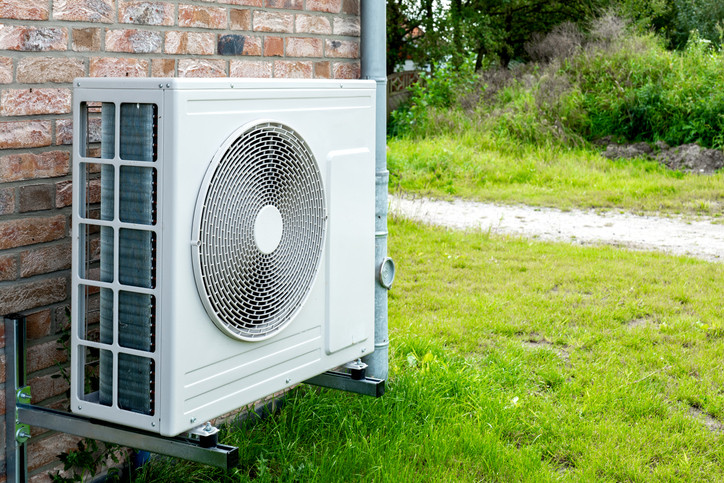To figure out the size of a heat pump for your home, you need to know your heating and cooling needs. It starts with knowing your home’s square footage and the quality of insulation, your local climate and energy efficiency. To calculate heat pump size, you multiply your home’s total square footage by a BTU-per-square-foot factor—20 to 60, depending on climate and insulation. This gives you the approximate BTU’s. Divide that by 12,000 and that’s the tons, which is the standard unit for heat pump sizing. For exact results, consult a professional to know how to calculate heat pump size.
1. Heat Pump Size Calculations
Proper sizing means your system is running efficiently and effectively to keep you comfortable. An undersized heat pump can’t meet your heating and cooling needs and will cost you more and wear out the system. An oversized heat pump will short cycle and give you uneven temperatures and reduce efficiency. The right size heat pump for a house depends on many factors—square footage, insulation, ceiling height, and windows. When you ask, “How big a heat pump do I need?” remember there’s no one answer. You need to calculate and consider your home’s unique characteristics.
2. What Affects Heat Pump Size
Several things affect how you calculate heat pump size. The main factors are your home’s square footage, insulation, window efficiency and geographic location. Homes in colder climates need heat pumps with higher BTUs to keep you comfortable in extreme weather. Homes with poor insulation or older single-pane windows will need more powerful systems. Modern homes are built with energy-efficient materials and the construction can often use smaller heat pumps. Knowing these variables will help you choose the right size heat pump for your house.
3. BTUs in Heat Pump Sizing
BTUs or British Thermal Units is the standard unit of measure for heating and cooling capacity. To figure out how big a heat pump you need to calculate your home’s BTU requirement. For most homes the BTU-per-square-foot factor is 20 in mild climate with good insulation to 60 in cold climate with poor insulation. For example. a 2,000-square-foot home in a moderate climate with average insulation would require about 40,000 BTUs. Divide that by 12,000 and that’s the tonnage—in this case, about 3.3 tons. Accurate BTU calculation is key to determining the right size heat pump for your home.
4. Manual J Load Calculation is the Gold Standard
While general BTU guidelines can give you a rough estimate, the best way to calculate heat pump size is through a Manual J Load calculation. This method considers your home’s unique characteristics—square footage, layout, insulation, orientation and local climate. It also considers additional heat gains and losses from windows, doors and appliances. This comprehensive approach will ensure the heat pump you choose isn’t too big or too small. A professional who performs a Manual J Load calculation can also recommend energy-efficient upgrades to optimize heat pump performance.
5. Heat Pump Sizing Mistakes
Choosing the wrong size heat pump can cause many problems. One common mistake is to only focus on square footage and not consider other factors like insulation and climate. Another mistake is to overestimate the benefits of a bigger system thinking it will perform better. In reality, oversized heat pumps cost more and are less comfortable due to short cycling. Don’t rely on old equipment sizing standards as heat pumps have become more efficient. Knowing how to determine heat pump size correctly will prevent these issues and get you the system you need.
6. How Big a Heat Pump for Your House
The best size of heat pump for your house depends on accurate calculation and considering all the variables. Start by calculating your home’s square footage and use a BTU-per-square-foot factor for your climate and insulation. For more accuracy, consider hiring a professional for a Manual J Load calculation. Also, choose a heat pump with a Seasonal Energy Efficiency Ratio (SEER) and Heating Seasonal Performance Factor (HSPF) that matches your climate. High-efficiency heat pumps may have slightly different sizing requirements as they can manage temperature swings with less energy.
7. Advantages of Proper Heat Pump Sizing
Proper heat pump sizing gives you optimal comfort, energy efficiency and longer system life. A correctly sized heat pump will maintain consistent indoor temperatures without overworking, reducing wear and tear and your energy bills. Proper sizing also reduces noise and ensures even temperature throughout your home. A well-sized heat pump means a smaller carbon footprint as it runs more efficiently. Knowing the heat pump size will get you the most out of your investment and a comfortable and sustainable living space.
Heat pump sizing requires precision and knowing your home’s specifics. Now you know the importance of heat pump sizing, do the BTU calculations and get a professional to do a Manual J Load calculation and you’ll choose the right heat pump for your house. Don’t make mistakes, be energy efficient and get the system you need for years to come.
Are you ready to find the perfect heat pump for your home? Contact the experts at R&R Mechanical Services at (616) 452-6888 today for a professional assessment and personalized recommendations to maximize your comfort and efficiency!



